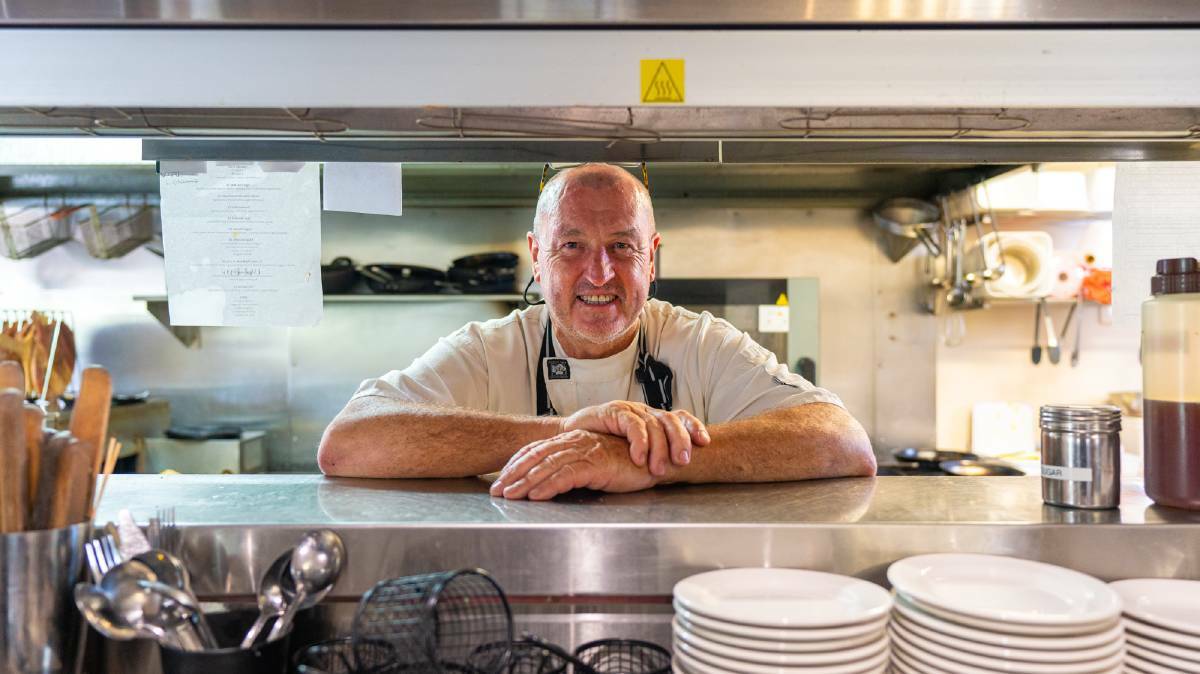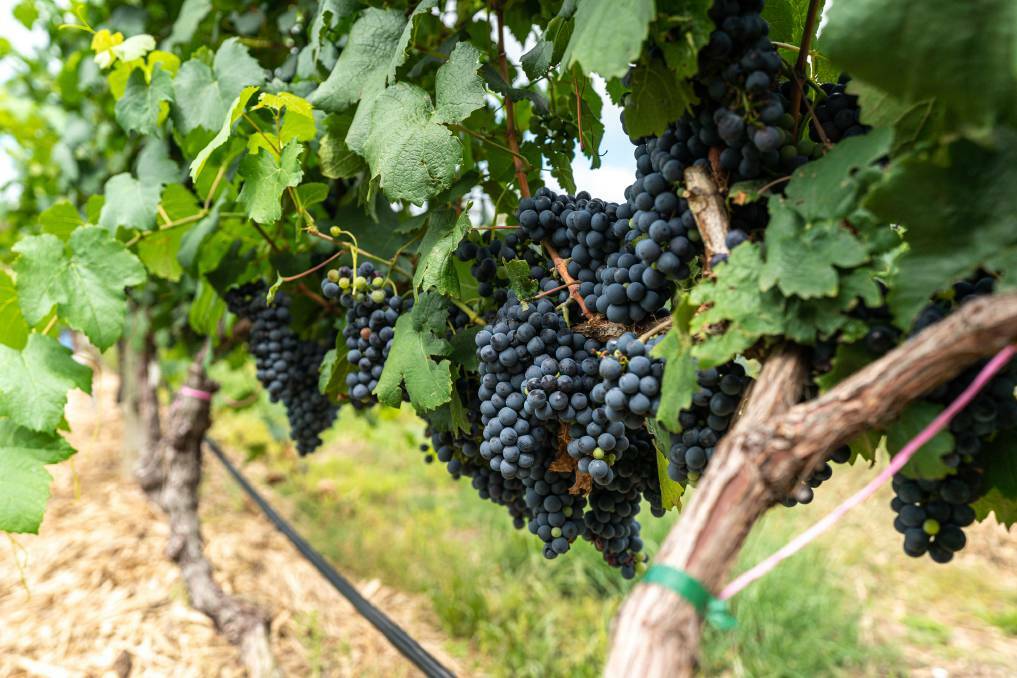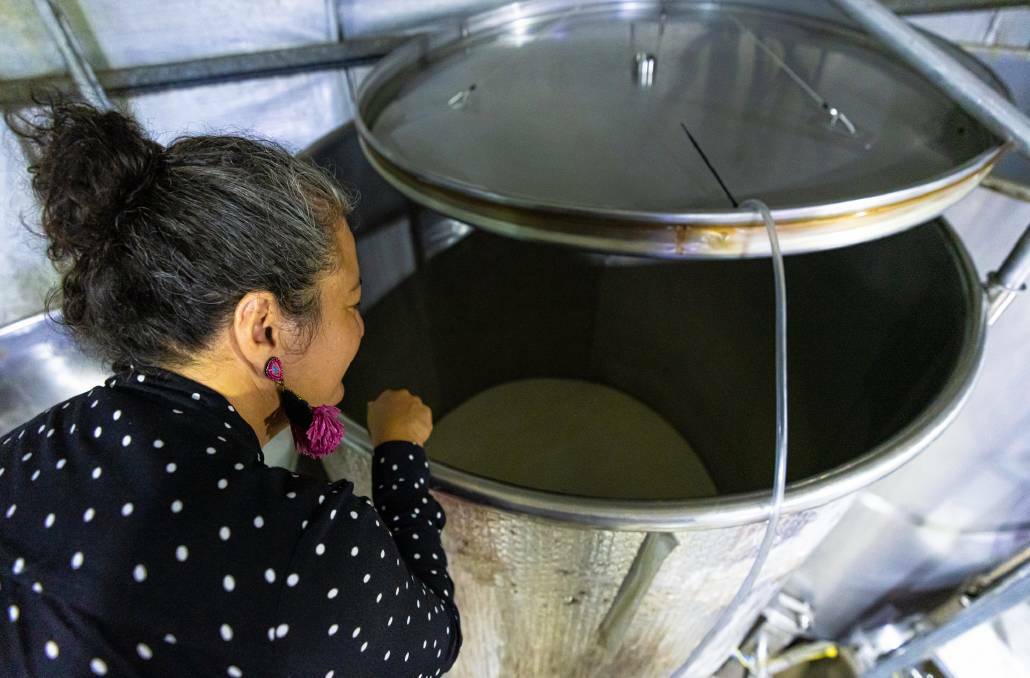Once upon a time, Robert Davidson ran a restaurant in Manuka called Roberto’s. After he left, it became the iconic Belluci’s, while Robert went on to follow his passion – wine. He thought he would go to Tasmania, but actually ended up heading north (unusual for a wine-seeker). And much further north than you might expect, at that.
Create a free account to read this article
$0/
(min cost $0)
or signup to continue reading

Two years ago, Robert bought a vineyard in Queensland, in a region called the Granite Belt. It may not be particularly well-known compared to other Australian wine regions, but amongst those who pay attention, it’s been slowly making a name for itself.
The problem for Robert, and something he couldn’t have foreseen, was that the Granite Belt was about to be hit by one of the worst droughts in decades. Then, last September, terrible bushfires burnt through the area, just compounding the problems for winemakers. If that wasn’t enough, these natural disasters meant wildlife was more likely to target crops to find food – just another threat for producers to deal with.
“I couldn’t have done it any harder,” Robert tells me when I visit.
He opened a restaurant called St Jude’s on the New England Highway and is operating as a cellar door for the large Sirromet Wines. But his own winery plans have been badly hit.
“We had a fire go through our property and it took out about four acres of vineyard. And having no water, you can’t do anything with no water. We wanted to start replanting but it’s impossible.”
The story is similar across the whole Granite Belt, which takes in the main towns of Stanthorpe and Ballandean, just a couple of hours’ drive from Brisbane. Everyone’s been doing it tough and there’s been a sense of despondence in the region. Farmers have had to sell cattle, winemakers have pulled out vines, cafes have cut employee’s shifts or closed early.

In recent weeks, though, the rain has started to fall and you can feel a bit of cautious optimism. Producers here are beginning to talk about how they’ll use the new water in the dams for crops in 2021. But that’s still a year away. In the meantime, there’s something else they need almost as urgently as rain… tourists.
The Granite Belt could be to Brisbane what the Hunter Valley is to Sydney, the Barossa to Adelaide, or the Yarra Valley to Melbourne. It’s a beautiful wine region that’s a perfect weekend drive from the city, with wonderful local accommodation and a surprising selection of excellent dining options (I highly recommend Essen in Stanthorpe). Yet, for some reason, it doesn’t quite have the mainstream viticulture reputation as those other areas.
This may be partly because of its background. Winemaking began in the Granite Belt in the middle of the 1900s when Italian immigrants began to make wine more practical than palatable, earning it the nickname “the rough red”. The climate and the terroir didn’t lend itself to the most popular grapes, so the region stagnated in comparison.
But in recent years, with a different outlook and a renewed enthusiasm, winemakers have realised that the unusual conditions in this part of Queensland are actually perfect for lesser-known grape varieties. I might call them boutique, you might call them alternative. The local producers have given these wines their own name – strange birds.
I get to taste some of these so-called strange birds for myself at the Ridgemill Estate, founded by Spaniards in 1998 and taken over by Queenslander Martin Cooper in 2004.

In the whites, there’s a delightful Viognier. Not surprisingly, considering the original owners, the Spanish grape Tempranillo is excellent here. But the highlight for me is the Saperavi, a red grape from Georgia (the country) that’s said to be over 8000 years old.
My taste in wine is normally influenced more by 2-for-1 sales at the bottle shop than actual quality, but luckily Martin Cooper agrees with my assessment that this Saperavi is his best wine on offer at the moment.
“I just think the flavours are so intense,” he explains. “Dark chocolate, liquorice, spices. It’s just an incredible wine.”
The Granite Belt’s strange bird wines may have started out as a point of difference, a bit of a marketing strategy, but they’ve actually turned out to be hugely successful and are winning competitions across Australia.

“I personally think it’s a lot to do with our cold nights, which help hold the acid,” Martin says.
“I know there are wineries down south that aren’t planting Tempranillo because they don’t get the cold nights, for example, so the wines become a bit flabby.”
The idea of cold nights is all relative. Stanthorpe does indeed hold the record for the coldest temperature in Queensland, but that’s partly explained by the quirky state border that means the town is actually the same latitude as Byron Bay. For most southerners, it’s still a warm getaway most of the year.
And the weather, combined with the wine, and all the other region’s offerings make it yet another great domestic destination to explore while we help the country recover from recent natural disasters.
I’ve run out of space to tell you about the local brewery, the chocolate maker, the jam tastings, the apple pie shop, the strawberry farm, the soap manufacturer, and the national parks. But maybe that’s a good thing. Maybe you could find time between your tastings at the vineyards to discover these things for yourself and have the same sense of astonishment I did. Where has Queensland been hiding this place?!




